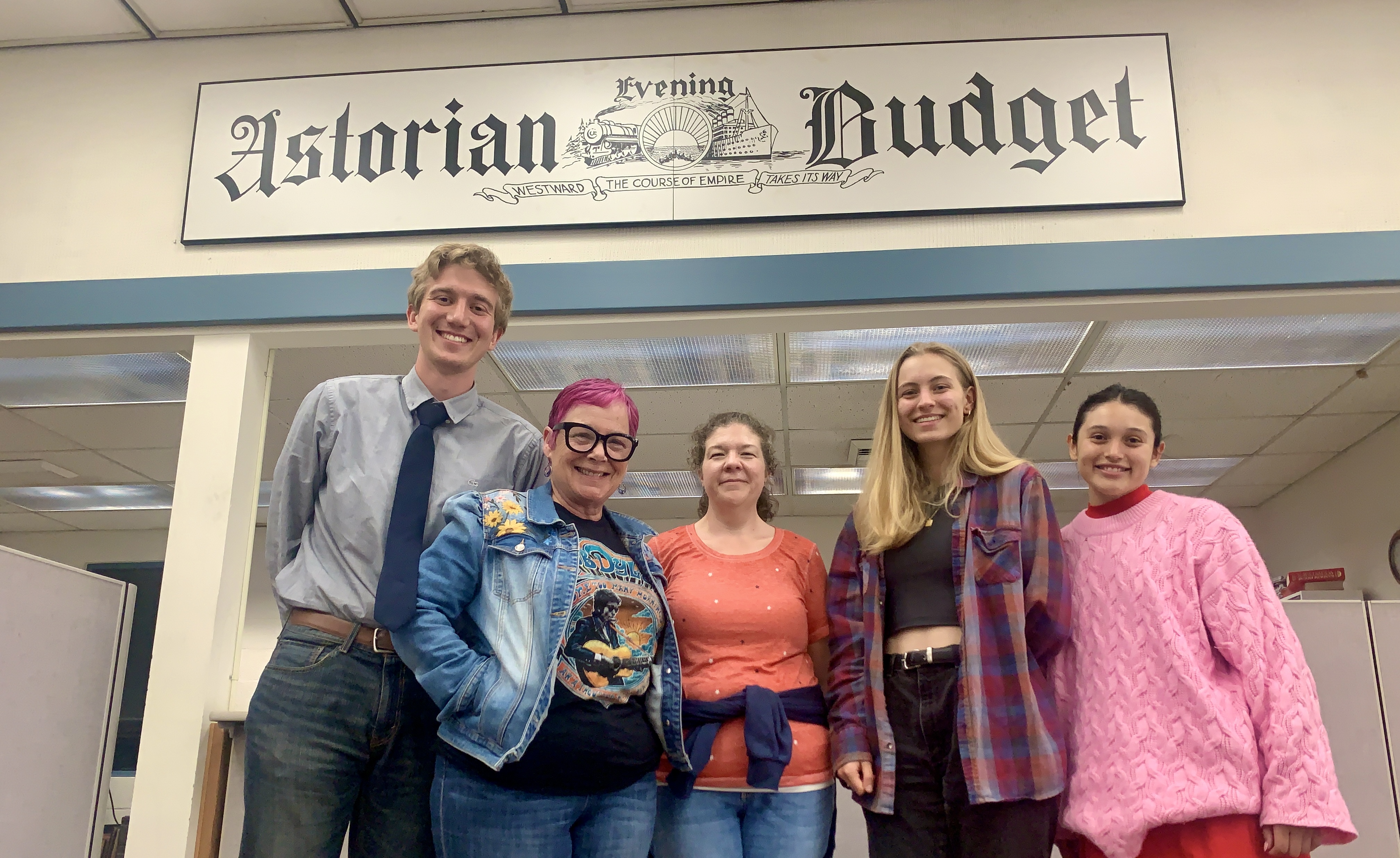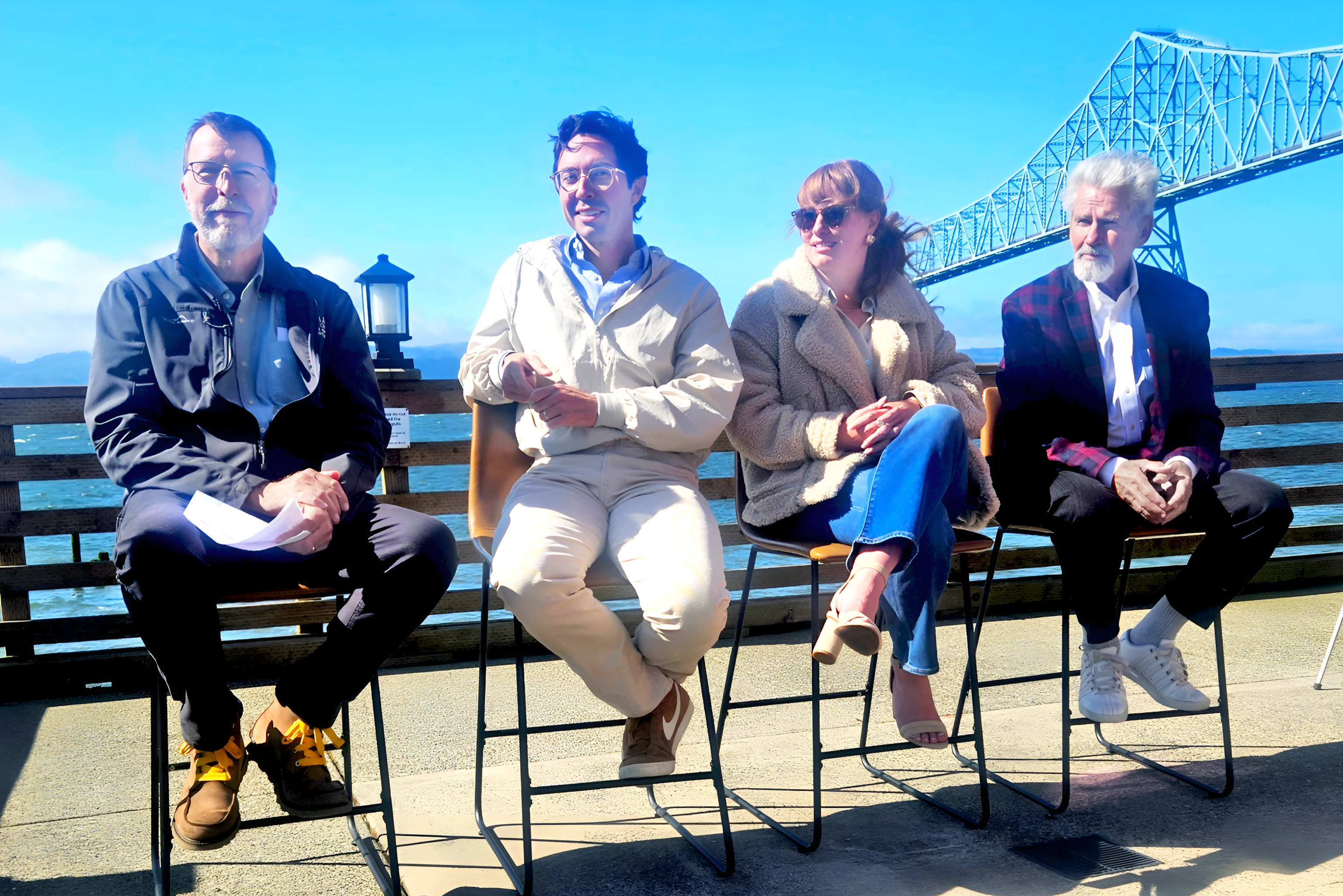Theaters had tough luck in early Astoria
Published 5:00 pm Thursday, April 28, 2005
This winter, an old, large, one-word, electric sign emerged from the basement of the Liberty Theater. It read, “Astoria.” Spectators wondered if it was formerly used at the town’s entry or if it was used by a local business. The sign belonged to the long-gone Astoria Theatre.
The first Astoria Theatre was located on the southeast corner of 12th and Exchange. Originally known as the Fisher’s Opera House, it was home to vaudeville, live theater and early silent films. It is also reputed to have been where Clark Gable began his acting career. He performed on the stage there in the summer of 1922.
After the Great Fire of 1922, the theater moved to a building on the southeast corner of 12th and Marine Drive. The theater was located in the middle of the block, facing 12th Street. Strong & MacNaughton were the architects. The Portland firm designed all three buildings on that half-block including the Stokes building, now Wells Fargo, and the Griffin building, now Links Sporting Goods.
It is difficult to know precisely what the building looked like. Finished drawings are not available. Historic photographs are scarce. Preliminary drawings detail a simple building with Classical elements around the theater’s entry. A galvanized iron marquee with glass shields projects from a shallow foyer.
The building was owned by William F. McGregor and Joseph Jacobs. McGregor was at one time the president of Astoria Box Co. and a customs collector. When the theater was constructed, he was president of the First National Bank and partner of E. P. Noonan in general insurance. Early tenants of the building included John V. Burns Cigars & Tobacco, Astoria Real Estate, Paulsen Fish Market and E.P. Noonan Insurance.
John Goodenberger — For The Daily Astorian
The Astoria Theatre sign once hung on the northeast corner of 12th and Commercial streets. Today, the sign rests in a Seaside scrap yard. The Astoria Theatre opened May 30, 1925, nine weeks after the grand opening of the Liberty Theater and three days before that at the Riviera Theater. Management boasted the 660-seat movie house had a stage equipped for “legitimate” live performances – i.e. a fly loft large enough for drop curtains and scenery and a stage large enough to accommodate a variety of performers.
‘The Speed Spook’Its first feature film was “The Speed Spook,” a Johnny Hines race car comedy dubbed “6 reels of whirlwind action, 60 miles of thrills to the minute.” A publicity stunt commenced with a “bug type” automobile which cruised the streets without any apparent driver. Although a sign on its hood declared answers to the mysterious car could be found at the Astoria Theatre, confusion was unabated. The Astoria Evening Budget reported, “At nearly every block, some pedestrian can be seen sprinting after the car in a desperate effort to stop it.”
Within a year of opening, the Astoria Theatre was closed because of a dispute between McGregor-Jacob Inc. and the Elbe Theaters company, renters of the movie house. McGregor-Jacobs filed suit asking for $1,500 in back rent. Elbe Theaters company claimed, under certain circumstances, they were not required to pay the $450 monthly rent. William McGregor purchased the theater from Elbe Theaters and reopened the theater under his name in July 1926. The theater provided vaudeville, minstrels, night club revues and an occasional boxing match.
Unfortunately, McGregor was killed by a train a few months later. The theater closed within a few years.
In 1931, manager W. B. McDonald announced the theater would reopen. A contest was held to rename the newly remodeled theater. More than 2,000 names were submitted within four days. The “Aurora,” “Golden West, ” “Lewis and Clark” and “Marigold” were well-liked. However, Lawrence King of Knappa chose the favored name – “The Viking.”
At this point, the “Astoria” sign was most likely removed from its perch on the southwest corner of the Stokes Building. It is unknown when the sign was carried across Commercial to the basement of the Liberty Theater.
Viking openingThe new Viking Theater opened Nov. 6, 1931. Large “kliegs” illuminated the streetscape, drawing attention to the festivities and providing enough light to film audiences walking into and out of the theater. That film was later rushed to Portland, developed and hustled back to Astoria within a day. Then, patrons were able to return to the theater and see themselves on the large screen.
Once again, the theater struggled, then collapsed under the weight of The Great Depression. In 1933, Fox Liberty purchased and closed the movie house. Its doors were opened, however, for special events such as plays, the awarding of trophies to outstanding local athletes, union mass meetings and demonstrations by a cooking school.
In 1941, the Viking Theater was owned by J. J. Parker interests who also owned the Liberty and Riviera theaters. It was announced the Viking was being remodeled yet again. Naturally, it had the most up-to-date equipment installed. Apparently, the theater got lost in a shuffle after Parker’s death. At least four years would pass before movies were projected onto its molded-plastic screen.
By 1948, the auditorium – which was known for its good acoustics – was used by the Astoria Civic Music Association for its concerts. Similar to the Community Concert series, high-quality artists were retained for performances around the nation. Astoria benefited immensely, thanks to early presidents William Seeborg, Wendell Wyatt, Robert Holmes, Dr. Robert Neikes and Mary Louise Flavel. Young opera singers, who were breaking into the national consciousness, performed at the Viking Theater. They included contralto Eula Beal, soprano Dorothy Warenskjold and bass baritone Jerome Hines. According to Flavel, Giuseppe DiStefano, “the most beautiful tenor voice of his generation” performed to a sell-out crowd. Pianists Leonard Pennario and Ferrante & Teicher also performed for enthusiastic audiences.
Again, the theater’s glory was short-lived. By 1955, according to phone directories, its doors were closed. In 1959, John W. “Bill” Blunk converted the theater into a roller skating rink. A pipe organ from the Liberty Theater was reinstalled there and played by Blunk. Blunk’s roller rink fared until 1968. Shortly afterward, the First National Bank demolished the building for use as a parking lot. Today, the empty lot is used for more than parking; during the summer, it serves as a food court for the Sunday Market.
But what of the old “Astoria” sign? The sign’s removal from the Liberty Theater’s basement was necessary for the renovation of that building. The corroded sign was destined for scrap metal. Now, an Astoria businessman is attempting to purchase the sign. If he is successful, it will return to Astoria from a Seaside scrap yard. Then, it will be retained in a commercial basement until a more permanent and visible space can be found for its display.
John E. Goodenberger is a historic building consultant who lives in Astoria.









